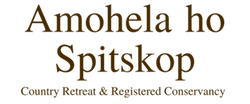Medicinal Healing Plants of Spitskop - Bulbine Narcissifolia/Khomoyabadisa

We Walk Lightly on the Earth.
Bulbine species has many common names used by traditional healers and indigenous people. In Sotho, it is referred to as Khomo-ya-Ntsuammele, Sehlare-sapekane, Sehlare and in Xhosa and Zulu, it is referred to as Intelezi, Ishaladi lenyoka. In Northern Sotho it is know as Kgomoyabadisa.
When we moved here over 21 years ago - we were unaware of the healing qualities of the beautiful Chincherinchee like plants growing wild in the fields of Spitskop - just these were yellow in colour. A struggle with dry-hands cuts and cracks - on our daily walk with dogs I suggested Allen pull one thick fleshy leaf and rub the bright yellow sap onto his cuts and cracks - the next morning his hands were hugely better - a week later - the cracks and cuts had all but disappeared.
An investigation - and I found that this was one of the most healing plants on the planet - has been scientifically studied as the "new" kid on the block of indigenous/native healing plants in South Africa - is hugely used in the cosmetics industry.
The BULBINE Narcissifolia that grows in profusion on Spitskop is an aloe-like succulent plant with a rosette of fleshy leaves. The many small (about 10mm) yellow flowers are borne in elongated clusters on long, thin flowering stems.

The profusion of Bulbine Narcissifolia plants in the summer months that grow on Spitskop means we can forage and wild harvest -
The summer months when mosquitoes and horse flies can prove pesky - We offer guests some of the fleshy leaves on arrival and instruct them how to pull leaves without harming the plant - and rub on a bite when walking the beautiful trails- climbs into mountain - they can use on rashes - burns - the fresh juice is marvelously healing.
We make beautiful soothing infused oils - steamed for 3 hours in organic olive oil - then strained into bottles - left to stand for 2/3 weeks when it is again strained and the magical clear oil is ready for use and is an absolutely incredible healer. We have started with the making of tinctures - once tested these will be available for sale.
This is the perfect plant for a Wild Flower Nursery - even flat dwellers can benefit greatly from having a pot plant of Bulbine Narcissifolia standing on a window sill or balcony - where just a tiny bit of leave-juice works wonders - its a beautiful garden plant and potted plants are perfect for sale - its use is spreading and it is a great contender for a future Wild Flower Nursery.

Therapeutic Uses - Bulbine Narcissifolia is one of nature’s finest medicinal plants. It’s a remarkable first aid medicine chest all in one.
Externally the freshly squeezed juice, frequently applied, is amazingly effective to take care of a wide range of skin conditions and wounds.
The list is almost endless: acne, burns, blisters, cold sores (even in your mouth and nose), cracked lips, cracked fingers, nails and heels, insect bites, itchy places, fever blisters, mouth ulcers, sunburn, rashes and ringworm.
It’s also very effective for treating wounds, sores and rashes on animals.
You can also make a warm poultice and apply it to the affected area to treat any of the above as well as eczema and arthritis.
Internally an infusion (sometimes a brandy tincture) of a few fresh leaves in a cup of boiling water is taken for coughs, colds and arthritis.
Traditional information and antibacterial activity of four Bulbine species - Department of Nature Conservation, Mangosuthu University of Technology, Durban,
Ethnobotanical survey of Bulbine (Asphodelaceae) used for various treatment, such as, diarrhea,
burns, rashes, blisters and insect bites, was carried out in the Eastern Cape Province of South Africa.
Most uses of Bulbine species closely resemble that of Aloe. Dried leaf bases and leaf sap are the commonest parts of the plants used. Preparations were in the form of decoctions and infusions - for the treatment of diarrhoea, burns, rashes, blisters, insect bites, cracked lips and mouth ulcers.
The medicinal implications of the Bulbine species have been well known for centuries and were used as early as the eighteenth century. The British and Dutch settlers of Southern Africa utilized the species for various medicinal aliments. The indigenous knowledge was crucial at that time. They made their knowledge available to the settlers who suffered diseases such as diarrhea; other treatments that the family of plants were used for was for sores, burns, etc. With the recent advancement of research, in the field of medicinal plants and their treatments, it has become apparent that many of the species utilized by indigenous people as well as the knowledge of the traditional healers has began to make its mark on society as a possible avenue for cure to
diseases. The effective remedies obtained for traditional healers have proved successful.



Share This Post